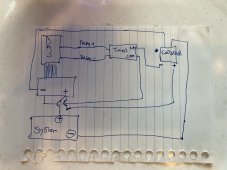its not just the extra wiring, its the extra fusing, and the other extra complexity.
chargery -> time delay cap circuit -> contactor
vs
chargery -> ssr
batt -> ssr -> contactor
batt -> contactor
plus fusing
I guess I was assuming "time delay cap circuit" would be various wires, not a PCB or such
It’s pretty important to me. 24v 560ah bank with 1500 watts solar. powering mini split, fridge, water pump, led lights, various electronics, 2 burner induction stove, air fryer.
As an example, the Gigavac MX14 is 2.8W but requires 3.9A pick-up current. The MX11 is 8 watts but only requires 0.68 amps ever. So that's a 5 watt difference or 120Wh/day or 0.8% per day of a 14,784 Wh battery bank. Would that work? (not sure what your peak DC load is)



